-
 우주·항공
우주·항공[우주칼럼] 미국 대학교 최초 UFO학과 만든다…뉴저지, UAP 연구센터에 세계 최초 국가 예산 투입
[뉴스스페이스=이종화 기자] 미국에서 처음으로 주립 대학 기반의 미확인 공중 현상(UAP, Unidentified Aerial Phenomena) 연구 센터 설립을 위한 국가 예산을 마련한 주가 등장했다. 뉴저지 주지사 필 머피는 2026년 1월 12일(현지시간) 하원 법안(A-5712)을 서명함으로써 미국 최초로 대학 기반 UAP 연구에 국가 자금을 제공받은 도시가 된 것. safeaerospace.org, flyingmag.com, albany, ufos-scientificresearch.blogspot에 따르면, 이 법안은 항공 안전 프로그램 두 가지에 연간 총 350만 달러를 배정하며, 그중 250만 달러를 대학 그랜트로 활용해 UAP 연구 센터를 지원한다. 나머지 100만 달러는 뉴저지 거주 항공 교통 관제사(ATC) 대상 대출 상환 프로그램으로, FAA 승인 시설 근무자 18~20명에게 4년간 최대 10만 달러씩 지원 가능하다. 법안 상세 내용 법안 A-5712(S-4432 동반 법안)는 뉴저지 고등교육 학생 지원청 산하 항공 교육 그랜트 프로그램을 통해 공립 대학이 UAP 연구 센터를 운영할 수 있도록 설계됐다. 자격 대학은 FAA의 무인항공기 Collegiate Training Initiative(UAS-CTI)에 참여하거나 참여 예정인 기관으로 우선 배정되며, 대도시 카운티 소재 대학이 우대된다. 사용되지 않은 자금은 이월되어 지속 지원되며, FY2026 예산에 이미 배정된 200만 달러를 보완한다. 이는 2024년 말 뉴저지에서 발생한 수천건의 '드론' 목격 사건(대부분 새나 합법 드론으로 판명됐으나 군사 시설 상공 미확인 사례 포함) 배경에서 항공 안전 강화를 위한 조치로 평가된다. 배경과 추진 과정 법안은 Americans for Safe Aerospace(ASA)가 주도적으로 지지하며, 양원에서 만장일치 통과됐다. ASA 집행이사 라이언 그레이브스 전 해군 F-18 조종사는 "조종사 95%가 직업적 낙인 때문에 UAP 보고를 꺼린다"며 센터가 센서 네트워크 구축, 표준화된 데이터 수집 프로토콜 개발 등 과학적 연구를 촉진할 것이라고 밝혔다. 뉴저지 의원들은 연방 정부의 미온적 대응에 불만을 표하며 주 차원의 대응을 선택했으며, ASA는 이를 다른 주의 템플릿으로 제공 중이다. 구체 센터 후보 대학으로는 Atlantic Cape Community College, Warren County Community College, Kean University가 거론된다. 국제·국내 반응 글로벌매체들은 뉴저지 법안을 "UAP 연구의 주 차원 전환점"으로 보도하며, 연방 수준 연구 정체를 비판했다. Flying Magazine은 "조종사 낙인 해소와 항공 안전 데이터 격차 메움"으로 평가했으며, Leonard David은 버몬트 주 등 다른 주의 유사 법안과 연계해 언급했다. ASA는 다주 네트워크 구축을 제안하며, Safe Airspace for Americans Act(하원 제출)처럼 연방 보고 채널 확대를 촉구하고 있다.
-
 공간·건축
공간·건축[지구칼럼] "식물도 생물다양성에 의해 형성되는 화학적 네트워크 통해 소통"…생물다양성 상실, 생태계 붕괴 위기 가속
[뉴스스페이스=이종화 기자] 식물은 서로 일대일로 대화하지 않는다. 대신 광범위하게 연결된 화학적 네트워크를 통해 소통하며, 이러한 보이지 않는 대화의 풍부함은 주변 종의 다양성에 직접적으로 달려 있다는 새로운 연구 결과가 나왔다. 미국 국립과학원회보(Proceedings of the National Academy of Sciences)에 발표된 연구는 "식물의 화학적 소통이 일련의 개별적 교류라기보다는 군집 전체의 방송 시스템처럼 작동한다"는 것을 입증했다. 이는 생물다양성 손실이 생태계 전체를 어떻게 불안정하게 만들 수 있는지를 이해하는 데 중요한 의미를 갖는다. pnas.org, discovermagazine, ice.mpg, idw-online, the-jena-experiment, functionalecologists, phys.org에 따르면, 막스 플랑크 화학생태학 연구소와 킬 대학교 연구팀이 독일 예나 실험(Jena Experiment)의 초원 생태계에서 실시한 야외 실험 결과, 식물 군집의 종 다양성이 높아질수록 휘발성 유기화합물(VOC) 방출량과 종류가 급격히 증가하는 것으로 확인됐다. 연구팀은 종 다양성 1종에서 60종에 이르는 80개 이상의 플롯에서 투명 케이지와 개별 플라스틱 백을 이용해 군집 전체와 질경이(Plantago lanceolata) 개체의 VOC를 정량 분석했으며, 고다양성 플롯에서 VOC 총량이 저다양성 플롯 대비 최대 2배 이상 방출되고 화합물 다양성 지수(Shannon index 기준)가 1.5배 높아진 수치를 기록했다. PNAS(Proceedings of the National Academy of Sciences)에 2026년 1월 15일 게재된 이 논문(Pamela Medina van Berkum 등)은 "종 다양성 증가 시 군집 수준 VOC 방출이 복잡해지며, 이는 개체 수준 신호에도 간접 영향을 미친다"고 결론지었다. 예를 들어, 녹색 잎 휘발성 물질(GLV)이 풍부한 이웃 식물이 많은 환경에서 질경이는 자체 GLV 방출을 30-50% 줄였으나, 테르펜(terpenes) 중심 이웃에서는 테르펜류 신호 다양성이 40% 이상 증가했다. 이러한 변화는 단순한 개별 교류가 아닌 '네트워크형 방송'으로 작동하는 식물 화학 소통의 본질을 드러내며, 고다양성 초원에서 확인된 VOC 종류는 50종 이상으로 저다양성 대비 2-3배 많았다. 예나 실험, 20년 장기 데이터로 입증한 '숨겨진 네트워크' 세계적 장기 생물다양성 연구인 예나 실험(2002년 시작, 2026년 기준 24년 차)은 종 다양성 구배(1, 4, 16, 60종)를 인위 조성한 초원 플롯을 통해 생태 기능을 탐구해 왔다. 이번 연구는 이 실험의 '휘발성 물질 프로젝트' 일부로, 기존 온실 연구의 한계를 넘어 야외 조건에서 VOC를 포집·분석한 최초 사례다. 연구원 파멜라 메디나 반 베르쿰(Pamela Medina van Berkum)은 "자연 생태계에서 식물은 수십 종과 공존하며 상호작용하므로, 1-2종 이웃 실험으로는 네트워크 효과를 포착할 수 없다"고 강조했다. 분석에 사용된 최첨단 기기(GC-MS 등)는 VOC 농도를 ng/g 잎 무게당으로 정량화했으며, 고다양성 플롯의 테르펜류(α-pinene, β-pinene 등) 방출량이 monoculture 대비 평균 2.5배 높아 pollinator 유인 효율을 강화하는 것으로 나타났다. Discover Magazine 보도에 따르면, 이러한 신호 복잡화는 초식동물 방어와 토양 미생물 상호작용을 강화하지만, 다양성 50% 감소 시 VOC 네트워크 안정성이 60% 이상 저하될 수 있다. 보전 전략, '다양성 복원'으로 화학 네트워크 되살리기 연구 수석저자 지빌레 운지커(Sybille Unsicker) 킬대 식물학 교수(전 MPG Plant-Environment Interactions 그룹 리더)는 "생물다양성 손실은 종 멸종 이상으로, 보이지 않는 화학 소통망을 파괴해 생태계 기능을 위협한다"고 경고했다. 구체적으로, 저다양성 환경에서 VOC 감소는 수분 매개자 유인율 20-40% 하락과 초식 피해 증가를 초래할 전망이며, 이는 기후 변화와 결합 시 생태 불안정성을 가속화한다. 국제 매체 반응도 뜨겁다. Phys.org는 "지속가능 농업(플라워 스트립), 작물 다양화, 제초제 감축으로 VOC 네트워크를 복원할 수 있다"고 강조했으며, IDW(독일의 과학정보 서비스, Informationsdienst Wissenschaft e.V.)는 후속 연구로 곤충 유인 패턴 변화를 탐구할 계획이라고 보도했다. 한국 환경부의 생물다양성 전략(2025 보고서)과 연계 시, 국내 초지·농경지 다양성 증진 정책이 시급하다는 지적이다. 연구팀은 향후 생태 기능 영향 실험을 예고하며, "VOC의 생태적 중요성 규명을 위한 후속 연구가 필수"라고 밝혔다.
-
 월드
월드[이슈&논란] 트럼프 막내아들·덴마크 공주 ‘정략결혼’? 그린란드 문제 해결…희토류와 나토가 만든 북극 신냉전의 자화상
[뉴스스페이스=김문균 기자] 미국과 덴마크·그린란드 3자 회담이 ‘근본적 이견’만 확인한 채 빈손으로 끝난 직후, 도널드 트럼프 미국 대통령의 막내아들 배런 트럼프(19)와 덴마크의 이사벨라 공주(18)를 정략결혼시키고 그린란드를 ‘혼수’로 미국에 넘기자는 정치풍자 게시물이 전 세계 SNS를 타고 확산되고 있다. 16세기 왕실 외교를 연상시키는 이 농담은 얼핏 황당한 이야기처럼 보이지만, 그 이면에는 희토류·북극항로·나토 확장이라는 21세기 지정학 갈등이 촘촘히 얽혀 있다. ‘배런-이사벨라 정략결혼’ 밈의 전개 X(옛 트위터)에서 활동하는 정치풍자 계정 ‘미스 화이트’는 “배런 트럼프와 덴마크 이사벨라 공주가 결혼하고, 그린란드를 미국에 혼수로 주면 된다”는 글을 올리며 양국 갈등을 풀 ‘간단한 외교 해법’이라고 비틀었다. 이 게시물은 일주일 남짓한 사이에 조회수 600만~1000만회, ‘좋아요’ 수 10만건 이상을 기록하며 전 세계 이용자들 사이에서 ‘중세식 외교 판타지’로 회자되고 있다. 댓글에는 “합스부르크 왕가가 하던 식의 분쟁 해결 방식” “넷플릭스 사극 ‘브리저튼’에서나 가능할 설정”이라는 풍자부터, “배런이 스페인 레오노르 공주와 결혼해 미·유럽 연합제국을 만들자”는 2차·3차 ‘설정 놀음’까지 따라붙으며 온라인 밈으로 확산됐다. 일부 이용자는 AI로 생성한 배런·이사벨라의 가상 웨딩 사진을 공유하며 “21세기판 왕실 외교”라는 자막을 붙이기도 했다. 왕실 농담 뒤에 숨은 그린란드의 전략가치 농담의 배경에는 트럼프 대통령이 2019년에 이어 재임 2기에서도 그린란드 ‘매입·편입’ 의지를 노골적으로 드러내고 있다는 상황 인식이 깔려 있다. CNN과 BBC에 따르면 트럼프 행정부는 백악관·국방부 회의에서 “그린란드 확보를 위해 외교·경제 패키지는 물론 군사 옵션까지 포함한 ‘여러 가지 선택지’를 검토하고 있다”고 밝힌 것으로 전해진다. 그린란드는 세계 8위 수준으로 추정되는 희토류 매장량과 우라늄·철광석·니켈 등 전략광물을 품고 있으며, 북극항로의 거점이자 미사일 조기경보·우주감시 기지 역할을 하는 툴레(Thule) 미군 기지가 위치한 ‘군사-자원 복합 자산’이다. 미국은 자국 희토류 생산이 급감하고 중국이 채굴·제련·가공까지 공급망을 장악한 상황에서, 그린란드를 대체 공급지이자 북극 안보의 핵심 거점으로 보는 시각을 숨기지 않고 있다. 미국의 ‘그린란드 집착’과 덴마크·나토의 맞대응 미 싱크탱크 CSIS 분석에 따르면 미국은 2025년 미 수출입은행(Ex-Im Bank)을 통해 그린란드 탄브리즈(Tanbreez) 희토류 광산에 최대 1억2000만 달러 금융 지원을 검토하는 등, 이미 ‘소프트 인수’에 해당하는 자원·인프라 투자를 단계적으로 늘려왔다. CNN은 미 행정부가 그린란드의 “막대한 지하자원이 중국의 희토류 독점을 약화시킬 수 있다”는 판단 아래, 희토류·우라늄·철광석 채굴 프로젝트를 장기 전략에 올려놓았다고 전했다. 이에 맞서 덴마크는 최근 미국·덴마크·그린란드 3자 협상이 워싱턴 DC에서 열렸으나, 주권과 소유권을 둘러싼 견해차만 재확인한 채 별다른 합의 없이 종료됐다고 여러 외신이 보도했다. 협상 결렬 직후 덴마크 국방부는 “오늘부로 그린란드와 주변 해역의 덴마크군과 나토 동맹군 증강 배치를 시작한다”며 ‘아크틱 인듀어런스(Operation Arctic Endurance)’라는 이름의 합동훈련·증원 계획을 발표했다. 나토 병력 증강과 군사위기 레토릭 덴마크 국방부 발표문과 북대서양조약기구(NATO) 관계자 발언을 종합하면, 이번 조치는 전투기·초계기·수송기 등 항공 전력, 호위함과 순시선 등 해군 전력, 그리고 혹한 환경 훈련을 겸한 지상군을 순환 배치하는 방식으로 진행된다. 덴마크는 “북대서양·북극권의 연합 방위 태세를 강화하고, 그린란드 자치정부와 필수 인프라를 보호하기 위한 것”이라고 설명하면서도, 미국의 영유권 주장과는 거리를 두는 문구를 유지하고 있다. 트럼프 대통령은 회담 직후 자신의 SNS에서 “러시아나 중국이 그린란드를 점령하려고 하면 덴마크가 할 수 있는 것은 아무것도 없지만, 미국은 무엇이든 할 수 있다”고 주장하며, 최근 베네수엘라 사태를 예로 들어 “필요하면 군사력을 사용할 수 있다”는 메시지를 던졌다. 해외매체들은 미 정부 고위 관료를 인용해 “백악관 내부에서는 그린란드를 ‘지구상에서 가장 가치 있는 부동산’이자 ‘중국·러시아를 동시에 견제할 수 있는 전략 요충지’로 부르고 있다”고 전했다. 그린란드 주민 여론은 ‘압도적 반대’ 군사·경제 전략 논의와 달리, 그린란드 주민 다수는 미국 편입에 강하게 반대하고 있다. 알자지라와 현지 언론에 따르면, 그린란드 자치정부 관계자와 주민들은 “우리는 덴마크 왕국 내 자치를 유지하길 원하며, 누군가의 ‘부동산 거래 대상’이 아니다”라는 입장을 반복해 왔다. 미국 유력지 인터뷰에서 그린란드 정치인들은 “트럼프의 관심은 위협인 동시에 기회지만, 그 어떤 경우에도 주권과 정체성을 양도할 수 없다”고 강조했다. 덴마크 역시 마찬가지다. 유에스에이투데이(USA Today)는 그린란드 매입 가능성을 다룬 분석기사에서 “미국이 그린란드를 매입하려면 덴마크와 그린란드 모두의 동의가 필요하지만, 양측 모두 ‘섬은 매물로 나오지 않았다’고 못 박았다”고 전했다. 덴마크 외무장관은 워싱턴 협상 후 브리핑에서 “그린란드의 장기 안보는 현행 1951년 그린란드 방위 협정과 나토 체제 안에서 보장될 수 있다”며 ‘영토 거래’ 자체를 논외로 돌렸다. ‘왕실 외교’ 밈이 드러낸 21세기 패권 경쟁 배런 트럼프와 이사벨라 공주의 ‘정략 결혼’은 현실 정치에서는 불가능한 가상 시나리오에 불과하지만, 이 농담이 폭발적인 반응을 얻은 이유는 현대 국제정치가 여전히 영토·자원·동맹을 둘러싼 힘의 게임이라는 냉혹한 현실을 희화화했기 때문이다. 이용자들은 “나라를 결혼으로 교환하던 것은 1400년대 이야기”라며 중세 왕실 외교를 소환하는 한편, ‘결혼 후 이혼하면 공주가 미국의 절반을 나눠 갖는 것이냐’는 댓글로 영토 거래 논리 자체를 조롱했다. 유럽 언론은 이번 SNS 논란을 두고 “트럼프식 부동산 정치가 인터넷 밈 문화와 결합해, 북극 신냉전을 일종의 ‘왕실 로맨스 드라마’로 소비하게 만들었다”고 평가한다. 그러나 그 뒤편에서는 나토 병력 증강, 미·중·러의 북극 패권 경쟁, 희토류 공급망 전쟁이 실시간으로 전개되고 있다는 점에서, 이 농담은 가볍게 웃고 넘기기에는 너무 무거운 21세기 지정학의 그림자를 비추고 있다.
-
 공간·건축
공간·건축[공간사회학] 남극 '얼음 보관용 빙하도서관' 개소…녹는 빙하의 기후비밀 영원히 '봉인'
[뉴스스페이스=이종화 기자] 과학자들이 2026년 1월 14일(현지시간) 남극 콩코르디아 기지에서 세계 최초의 빙하 얼음 보존소 '아이스 메모리 성역'을 공식 개관하며, 기후 변화로 위기에 처한 산악 빙하의 귀중한 기록을 후세에 전할 기반을 마련했다. wmo, ice-memory.org, abcnews, cbc, theconversation, euronews, institut-polaire, europeanpolarboard에 따르면, 이탈리아 트리에스테에서 출발한 1.7톤의 얼음 코어가 50일 이상의 냉동 운송 끝에 도착한 가운데, 프랑스 몽블랑(콜 뒤 돔, 2016년 채취)과 스위스 그랑콩뱅(2025년 채취) 빙하에서 추출된 두 개의 코어가 영하 52도의 자연 동굴에 안치됐다. 위기 속 빙하 손실, 객관적 수치로 본 재앙 규모 전 세계 산악 빙하는 2000년 이후 지역별로 2%에서 39%까지, 전지구적으로 약 5%의 얼음을 상실하며 과학적 기록의 소실 위기에 직면해 있다. 유네스코 보고서에 따르면, 50개 세계유산 빙하 중 3분의 1이 2050년까지 완전 소실될 전망이며, 연간 580억톤의 얼음 손실은 프랑스와 스페인의 연간 물 사용량을 합친 규모에 달한다. 알프스 지역 빙하는 2011~2020년 연평균 1,420억톤 손실로 이전 대비 거의 2배 가속화됐으며, 2025년 서부 캐나다 빙하도 사상 두 번째로 큰 손실을 기록했다. 코어 세부 규격, 수천 년 기후 데이터 압축 그랑콩뱅 빙하 코어는 99.5m와 98.9m 길이로 암반까지 도달했으며, 바닥 온도는 영하 8도로 고품질 보존 상태를 확인했다. 몽블랑 콜 뒤 돔 코어(2016년 채취)는 대기 화학 및 기후 기록을 담아내며, 몽블랑 산맥 내 다른 코어처럼 최소 1만2,000년 전 빙하기까지 거슬러 올라가는 자료를 제공한다. 이 코어들은 먼지, 화산재, 대기 오염물, 동위원소 등으로 과거 강수량과 온난기(투명 얼음층), 추운 시기(다져진 눈층)를 재구성할 수 있게 해준다. 국제 파트너십과 장기 로드맵 아이스 메모리 재단은 2015년 설립 이후 프랑스 CNRS·IRD·그르노블 알프스대, 이탈리아 CNR·카포스카리 베네치아대, 스위스 폴 셰러 연구소·베른대를 창립 멤버로 삼아 13개국 이상 10회 이상 시추를 주도했다. 앞으로 안데스, 히말라야(파미르), 코카서스, 스발바르 등 20개 빙하에서 20년 내 코어를 채취해 300㎡ 규모 보존소에 추가할 계획이며, UN 극지과학 행동의해(2025~2034)에 맞춰 국제 거버넌스를 구축한다. 운송은 이탈리아 PNRA 프로그램의 로라 바시 연구선과 ENEA 특수 비행기로 이뤄졌다. 지속 가능 설비, 후세 과학 혁신 약속 35m 길이·5m 높이·폭의 동굴은 지표 5m 아래 압축 눈층에 총 9m 깊이로 파여 인공 냉각 없이 연중 영하 52도를 유지하며, 2024년 남극조약(ATCM46) 승인을 받았다. 프린스 알베르 2 재단 자금 지원으로 마드리드 의정서 환경 기준을 준수한 이 시설은 에너지 소비 제로로 오염·파괴 위험을 최소화한다. 토마스 스토커 재단 의장은 "미래 기술로 새로운 발견을 가능케 하는 글로벌 공공재"라 평가했으며, 부의장 카를로 바반테는 "대기 가스·오염물 보존으로 후대 연구 기반"이라고 강조했다.
최신뉴스
-
 빅테크
빅테크[빅테크칼럼] xAI 엔지니어, 팟캐스트에서 회사 기밀 공개 며칠 후 퇴사… "Macro Hard 로드맵 유출로 퇴사"
-
 빅테크
빅테크[빅테크칼럼] 모더나-머크 암 백신, 5년 추적 관찰에서 49% 효과 입증…"mRNA 암백신의 장기 승리"
-
 산업·유통
산업·유통[이슈&논란] '아틀라스' 침공에 연봉 1억 생산직, 로봇에 밀려날 위기…"연봉 1400만원에 365일 근무"
-
 빅테크
빅테크[The Numbers] 오픈AI, 연매출 200억 달러 돌파 속 경쟁 심화… 컴퓨팅 9.5배 폭증, 광고 도입으로 '수익다변화' 모색
-
 빅테크
빅테크[빅테크칼럼] 오픈AI, 첫 AI 하드웨어 혁명 '포켓 사이렌' 하반기 등장…"노트북·스마트폰 이을 '제3의 기기' 지향"
-
 빅테크
빅테크[이슈&논란] 네이버·구글 광고망 뚫고 침투…북한 해킹조직 '포세이돈' 작전 포착
-
 월드
월드[이슈&논란] 머스크, 美 중간선거 '황금손' 부활?…공화 경선후보에 150억원 '거액 기부'
-
 산업·유통
산업·유통[랭킹연구소] 韓 전기차 판매량 20만대 첫 돌파 "중국산 테슬라 모델Y 돌풍"…기아>테슬라>현대차>KGM>BYD
-
 우주·항공
우주·항공[우주칼럼] 중국 우주굴기의 '검은 토요일'…국영·민영 로켓 동시 추락, 5년 만 실패 쇼크
-
 우주·항공
우주·항공[이슈&논란] '항공료 부풀리기' 조사받은 경기도의회 직원 숨진 채 발견…18억 부당유용 스캔들, 어두운 실체
-
 우주·항공
우주·항공[이슈&논란] 북미 우주방위사령부, 그린란드 피투피크 기지 군용기 급파…트럼프 '강제 병합' 위협에 유럽 8개국 병력 증강 대치
-
 우주·항공
우주·항공35년 만 최강급 태양 흑점 폭발 '쇼크'…지구 직격 CME에 우주전파재난 '위기경보' 발령
-
 우주·항공
우주·항공[이슈&논란] ‘K-우주 신기술 5인방’ 떴다…CMOS 센서부터 LEO 안테나까지, 공급망 국산화 시험대
-
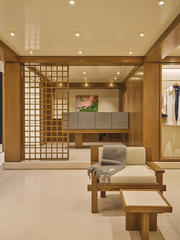 산업·유통
산업·유통[공간혁신] "전통 한옥과 파리감성 컬렉션이 만났다"…삼성물산 아미, 한남동에 플래그십 스토어 오픈
-
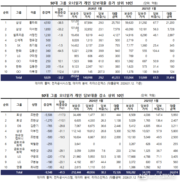 경제·부동산
경제·부동산[랭킹연구소] 오너일가 개인 담보대출 증가 TOP10…홍라희>이서현>서정진>정유경>최기원>김동선>구미정>이우현>김동관>이복영 順
대기업집단 오너일가 주식담보 여력 2배 늘었는데…담보대출금은 오히려 줄었다 리더스인덱스, 총수 있는 대기업집단 45곳 오너일가 주식담보 현황 조사 28개 그룹 176명 중 130명, 8조9300억원 대출…보유주식 가치 29.6% 대출 규모 1위 여전히 삼성, 홍라희 홀로 4550억 늘며 개인 최대 증가 셀트리온·영풍·신세계·한화 일가 주담대 증가…효성·DB·롯데 등은 감소
-
 공간·건축
공간·건축[이슈&논란] 술잔에 독도 표기하고 독도 굿즈까지 판매...서경덕 "日 섬마을, 집요한 독도 홍보"
-
 빅테크
빅테크[빅테크칼럼] "신체 염증, 자연적 차단 메커니즘 규명"… 만성질환 치료 혁신 앞당긴다
-
 경제·부동산
경제·부동산[The Numbers] 금값 사상 최고가 속 홍콩 억만장자, 자산 25% '황금'으로 갈아탄 이유
-
 빅테크
빅테크[빅테크칼럼] 스마트워치 제조사 "혈당 모니터링이 차세대 목표"…고혈압 정복 후 호흡기반 혈당 추적 본격화
-
 Culture·Life
Culture·Life[The Numbers] "의대 대신 반도체"…삼성·SK 계약학과 경쟁률 89대 1, AI 호황·하닉스 보너스에 이공계 르네상스
-

[이슈&논란] "노트북 500만원 시대" 삼성·LG 노트북 신제품 출고가 50만~100만원 '급등'…칩플레이션 폭풍에 스마트폰까지 직격
-

[공간사회학] '힙 불교' 템플스테이 35만명 '역대 최다'…2002년 월드컵·K-컬처 열풍에서 '느린여행·나는 절로' 진화
-

[지구칼럼] 청도 소싸움 축제, 약물 투여 의혹 수사 착수…304억원 매출로 전통보존 vs 동물복지 "한국 소싸움의 명과 암"
-

[이슈&논란] 학군지의 어두운 그림자…대치·목동서 쏟아지는 10대 '생명의 절규'
-

[공간혁신] '三白의 도시' 상주에 아름다운 선율 전하다…동아제약, 찾아가는 오케스트라 ‘메리 리틀 하모니’ 개최
-

[지구칼럼] 스리랑카, 세계 최대 3563캐럿 퍼플 스타 사파이어 "6000억원 가치"… 희귀 육조성 성채의 과학적 비밀
-

[빅테크칼럼] 바이낸스 창립자 CZ, 사면 후 첫 전망 "2026년 슈퍼사이클 vs 약세장 격돌의 불확실성" 예고
-

[빅테크칼럼] 마이크론 '황금 알' 터뜨리나… TSMC 전 회장 115억 '올인'·젠슨 황 "낸드 병목"·차세대가속기 수요급증
-

[이슈&논란] 또 다시 쿠팡 저격…무신사 “우린 ‘구빵 쿠폰’ 드려요”
-

[빅테크칼럼] 머스크 "AI5 설계 막바지·AI6 착수"…테슬라가 깨운 ‘삼성 파운드리 부활 엔진’
-

[내궁내정] 국방부 차관이 ‘국방부에서 서열 9위’라고? 2위 복원 임박…국방부 내 의전 서열 순위 TOP10
-

[랭킹연구소] 중국 저장대, 하버드 3위로 제치고 세계 연구 1위 등극…中 대학, TOP10 8곳 석권으로 '과학패권' 현실화
-

[이슈&논란] 구글 “소비자들 스스로 원해서 구글 쓰는 것”···美 법원 반독점 판결에 '항소'
-

[빅테크칼럼] 뿔난 머스크 “오픈 AI, 나 속이고 영리 추구”…‘오픈AI·MS에 198조 손해배상’ 폭탄 소송
-

[우주칼럼] 반세기 만의 유인 달 탐사, 아르테미스 II 로켓 발사대 도착…2월 발사 대기
-

[이슈&논란] 인도네시아서 11명 탑승한 항공기 실종…ATR기, 잔해 발견됐지만 악천후에 수색 좌초
-

[이슈&논란] 이륙 전 이스타항공 객실서 연기로 승객들 여객기 갈아타 '불편'…“보조배터리? 정확한 원인 조사중”
-

[우주칼럼] 중국의 거대 망원경, 고속 전파 폭발 기원의 첫 명확한 증거 포착… '스카이 아이'가 포착한 FRB 쌍성계 비밀
-

[지구칼럼] 아마존 '숨겨진 전사들' HD 영상 최초 공개…벌목 위협 속 생존 위기 직면
-

[우주칼럼] 지구 AI 전력 위기 속 '우주 데이터센터' 글로벌 경쟁…빅테크 '성큼' vs 한국 '걸음마'
-

[빅테크칼럼] 구글 딥마인드 CEO, "오픈AI 잡기 위해 순다르 피차이와 매일 통화"…AI 패권전쟁 가속 vs 버블 조짐
-

[우주칼럼] '유럽 저가항공 1위' 라이언에어 CEO "머스크는 매우 부유한 바보" 스타링크 도입 거부…'연료 폭탄' 논쟁
-

[빅테크칼럼] 엔비디아 젠슨 황, "엔지니어들이 코딩을 완전히 그만두기 바란다"…AI 코딩 혁명에도 "일자리 뺏지 않아"
-

[빅테크칼럼] 챗GPT, 기업 데이터 유출 71% 독식… 무료계정·중국 앱 '암흑기반' 폭로
-

[The Numbers] Threads, 엑스와 격차 1700만명 벌리며 '소셜 제왕' 등극 임박
-

[빅테크칼럼] 애플 ‘아이폰 18 프로’·첫 폴더블 스펙 유출…2nm·온디바이스 AI·터치ID로 '승부수'
-
Celltrion's Seo Jin-seok takes the stage, strengthening its position as a "new drug development company" at JPM, highlighting its new pipeline and global competitiveness
-
Toss Securities' US stock system malfunctions again... "MTS outage for 2 consecutive weeks" angers Foreign retail investors
-
Samsung's AI Refrigerator Named Worst Product at CES 2026, Controversy Over "Irrepairable, Advertising Hell"
-
Top 20 Minors in the Families of Domestic Listed Companies with Stock Investments… Jeong Da-na > Jo In-seo > Yang Seung-joo > Jeong Han-seon > Jeong Chang-wook, Jeong Chang-jun, Jeong Chang-yoon > Jo Jae-hyun
-
[이슈&논란] '항공료 부풀리기' 조사받은 경기도의회 직원 숨진 채 발견…18억 부당유용 스캔들, 어두운 실체

-
35년 만 최강급 태양 흑점 폭발 '쇼크'…지구 직격 CME에 우주전파재난 '위기경보' 발령

-
[이슈&논란] ‘K-우주 신기술 5인방’ 떴다…CMOS 센서부터 LEO 안테나까지, 공급망 국산화 시험대

-
[이슈&논란] 북미 우주방위사령부, 그린란드 피투피크 기지 군용기 급파…트럼프 '강제 병합' 위협에 유럽 8개국 병력 증강 대치

-
[우주칼럼] 중국 우주굴기의 '검은 토요일'…국영·민영 로켓 동시 추락, 5년 만 실패 쇼크

-
LIG넥스원, 카타르 방산전시회 ‘DIMDEX 2026’참가…"중동에서 K-방산 본격화"

-
[빅테크칼럼] 콩코드 부활? 붐 슈퍼소닉, 뉴욕-런던 구간을 3.5시간에 비행 목표…왕복 740만원 가격 '공개'

-
[이슈&논란] 술잔에 독도 표기하고 독도 굿즈까지 판매...서경덕 "日 섬마을, 집요한 독도 홍보"

-
[Moonshot-thinking] 물류와 호텔, “대형 자본은 이미 움직였다”

-
[지구칼럼] 청도 소싸움 축제, 약물 투여 의혹 수사 착수…304억원 매출로 전통보존 vs 동물복지 "한국 소싸움의 명과 암"

-
[공간사회학] '힙 불교' 템플스테이 35만명 '역대 최다'…2002년 월드컵·K-컬처 열풍에서 '느린여행·나는 절로' 진화

-
[지구칼럼] 스리랑카, 세계 최대 3563캐럿 퍼플 스타 사파이어 "6000억원 가치"… 희귀 육조성 성채의 과학적 비밀

-
[지구칼럼] "식물도 생물다양성에 의해 형성되는 화학적 네트워크 통해 소통"…생물다양성 상실, 생태계 붕괴 위기 가속

-
[지구칼럼] 아마존 '숨겨진 전사들' HD 영상 최초 공개…벌목 위협 속 생존 위기 직면

-
[콘텐츠인사이트] 로코를 애써 보지는 않지만… <이사랑 통역 되나요>를 보고

-
[콘텐츠인사이트] 진짜와 가짜, 그리고 본질…다시 봐도 수작 <사이비>를 보고

-
[커리어 블렌딩] 방황이 아닌 '확장'…흩어진 점을 연결해 ‘나’라는 브랜드 만들기

-
[콘텐츠인사이트] ‘우려’가 된 ‘반려’… <컴패니언>을 보고

-
[Future Hands up] 나뭇잎은 사실 초록색을 싫어한다

-
[콘텐츠인사이트] 상상은 괴물을 낳고, 차라리 보였다면…<얼굴>을 보고

-
[콘텐츠인사이트] 용서와 복수 사이에서, 코치는 무엇을 묻는가…<단죄> 1-3화를 보며

-
[콘텐츠인사이트] 신선한 소재와 톡톡 튀는 대사에 일단 만족… <캐셔로> 1-2회차를 보고

-
People
홍보회사 피알런 브랜드컴 신임 사장, JTBC 김준현 부사장 영입

[뉴스스페이스=이종화 기자] 종합홍보대행사 ㈜피알런(대표 이회석)은 5일 김준현 전 JTBC 대외협력총괄 부사장을 브랜드커뮤니케이션 사장으로 영입했다고 밝혔다. 김준현 사장은 언론사 기자 및 경영임원과 대기업 홍보임원(한샘 기업문화실장-전무)의 풍부한 경력을 바탕으로 피알런의 고객사 PR전략수립, 리스크 매니지먼트 등 브랜드커뮤니케이션을 총괄할 예정이다. [김준현 브랜드커뮤니케이션 사장 약력] - 1967년 生 - 1993년 중앙일보 입사 - 2020년 한샘 기업문화실장(전무) - 2023년~2025년 12월 JTBC 대외협력총괄 부사장, JTBC미디어컴 대외협력총괄 - 2026년1월 ㈜피알런 브랜드커뮤니케이션 사장
-
산업·유통
KT, 정통 'KT맨' 박윤영 전 사장 차기 대표이사 후보로 확정

[뉴스스페이스=조일섭 기자] KT 이사회는 16일 박윤영 전 KT 기업부문장(사장)을 차기 대표이사 최종 후보로 확정했다. 박 후보는 KT에서 30년 이상 근무한 정통 'KT맨'으로, 내년 3월 정기 주주총회에서 의결 참여 주식의 60% 이상 찬성을 얻으면 공식 취임하게 된다. 이사회는 박 후보를 "KT 사업 경험과 기술 기반의 경영 역량을 바탕으로 디지털전환(DX)·기업간거래(B2B) 분야에서 성과를 거둔 인물"로 평가하며, 변화와 혁신을 주도할 적임자로 선정했다. 박윤영, KT 경력과 주요 이력 박윤영 후보는 1962년생으로, 서울대학교 토목공학과에서 학사·석사·박사 학위를 취득한 뒤 1992년 KT에 입사했다. 이후 KT 융합기술원 미래사업개발그룹장, 기업사업컨설팅본부장, 기업사업부문장(사장) 등을 역임하며 컨버전스와 미래 사업, 기업 사업 등 B2B 분야에서 실적을 쌓았다. 이번 선정은 박 후보가 2020년과 2023년에 이어 세 번째로 도전 끝에 성공한 결과다. 해킹 사태, 수습이 최우선 과제 박 후보는 올해 8월 발생한 불법 초소형 기지국(펨토셀) 해킹으로 인한 무단 소액결제 사태 수습을 최우선 과제로 안고 있다. 민관합동조사단의 중간 조사 결
-
산업·유통
구글코리아, 삼성·애플·MS 출신 윤구 신임 사장 선임…"한국 내 광고세일즈 사령탑으로”

[뉴스스페이스=이종화 기자] 구글코리아가 2026년 1월 5일부로 윤구 신임 사장을 선임했다고 12일 공식 발표했다. 윤구 신임 사장은 구글코리아 광고 세일즈 부문을 총괄하며, 그의 풍부한 글로벌 기술 경영 경험을 바탕으로 구글코리아의 성장 동력 가속화를 이끌 것으로 기대된다. 윤구 신임 사장의 이력과 경력 윤구 신임 사장은 미국 노터데임 대학교에서 재무학 학사 학위, 미국 아이오와 대학교에서 경영학 박사 학위를 취득했다. 그는 애플코리아 사장, 삼성전자 상무, 마이크로소프트(MS) 시니어 디렉터 등 글로벌 선두 IT 기업에서 20년 이상 재직하며 디지털 트랜스포메이션과 지속 가능한 성장을 이끈 기술 경영 전문가로 평가받는다. 미국 마케팅 솔루션 스타트업을 창업한 경험도 있으며, 게임사 크래프톤의 사외이사로도 활동했다. 구글코리아 광고 세일즈 현황과 성장 전망 구글코리아의 광고 세일즈 부문은 지난해 국내에서 약 1762억원의 수익을 거두며 전년 대비 14% 성장했다. 전체 매출(3869억원) 중 광고 재판매가 차지하는 비중은 약 45.5%에 달한다. 구글코리아는 2024년 국내 광고 시장에서 정부 광고 수주액만 약 750억원을 기록했으며, 국내 IT업계와
-
People
[CEO혜윰] 백종원 6개월 만에 복귀한 ‘남극의 셰프’ 시청률 1.8% · ‘흑백요리사2’도 배제…대중 반응 싸늘한 이유

[뉴스스페이스=김희선 기자] 국민 셰프 백종원이 방송 활동 중단 선언 후 약 6개월 만에 MBC 교양 리얼리티 프로그램 ‘남극의 셰프’로 복귀했으나, 시청률과 대중 반응 모두 기대에 못 미치고 있다. 11월 16일 첫 방송된 이 프로그램은 닐슨코리아 집계 전국 시청률 1.8%를 기록하며 초라한 출발을 알렸다. 복귀작임에도 불구하고 시청률은 동시간대 다른 프로그램 대비 낮은 수치를 기록했고, 온라인상에서도 싸늘한 반응이 이어졌다. ‘남극의 셰프’는 백종원이 배우 임수향, 채종협, 가수 수호와 함께 남극 세종과학기지에서 혹독한 환경을 버티는 월동대원들을 위해 한 끼 식사를 준비하는 과정을 담았다. 백종원은 “기후변화가 심각하다. 남극이 기후 변화의 시작점이다”라며 “대원들을 위해 내가 할 수 있는 것을 해야 한다는 사명감으로 출연했다”고 복귀 배경을 밝혔다. 그러나 제작진이 ‘남극 기지 현실을 있는 그대로 담겠다’며 한국에서 별도의 식자재를 가져가지 않은 점이 온라인에서 ‘민폐’라는 비판을 받는 등 기획 방향에 대한 지적도 적지 않다. 백종원의 최근 논란이 대중 신뢰 하락의 주요 원인으로 지목된다. 올해 초 ‘빽햄’ 가격 논란을 비롯해 원산지 허위 표시, 농
-
공간·건축
[핫픽] "쪼개? 아니, 조개!" , “JUST DO EAT”…골목경제 B급 간판 ‘낙서형 브랜딩’에서 발견한 철학 강의실

[뉴스스페이스=이종화 기자] 서울 용산 골목의 한 조개구이집 창문에 “쪼 개? 아니… 조 개!”, “조개 제일”, “JUST DO EAT”이라는 손글씨 플래카드가 붙어 있다. 이 B급 감성 간판은 맞춤법과 디자인을 과감히 포기한 대신, 한글 말장난과 글로벌 슬로건 패러디로 행인을 붙잡는 ‘호객 문학’의 새로운 형식이다. “조개(貝)”와 “쪼개다”를 겹쳐 놓은 언어유희는, 힘든 시대에 지갑은 쪼개지 말고 조개나 굽자는 유머러스한 메시지로 읽힌다. JUST DO EAT, MZ 세대가 웃는 이유 “JUST DO EAT”은 글로벌 스포츠 브랜드 나이키의 유명 카피를 비틀어, 행동 촉구 대신 “먹는 행위”를 삶의 전략으로 끌어올린다. 한국 외식 소비에서 MZ세대가 차지하는 비중은 2023년 기준 전체 외식 지출의 약 36%로 추정되며, 이들 세대는 ‘웃긴 가게’, ‘인증샷 맛집’을 고르는 비율이 타 세대보다 1.5배 이상 높게 나타난다. 사진 속 가게처럼 간판 자체가 콘텐츠가 되면, 손님은 메뉴보다 먼저 카메라를 꺼내 들고 SNS에 올리며 자발적인 홍보 요원이 된다. 음식은 배를 채우고, 간판은 타임라인을 채우는 구조다. 숫자로 보는 ‘골목 B급 간판’의 힘 한국
-
공간·건축
[핫픽] AI 작사, BC(밸런스·컬러) 작곡 '포스트 디지털 산수화'…<무의식 산맥 위로 떠오른 알고리즘 태양>

[뉴스스페이스=이종화 기자] 이 미술 작품은 두꺼운 물감층(임파스토)으로 구축된 보랏빛 산맥과 에메랄드색 호수, 나선형의 태양과 구름이 등장하는 추상적 산수화다. 표면이 거의 부조(레리프)에 가깝게 솟아 있어 평면 회화라기보다 소규모 설치미술처럼 빛과 그림자를 끌어들이며, 보는 위치에 따라 산의 주름과 물결이 달리 읽힌다. 전통적인 원근법 대신 색 대비와 질감의 밀도로 공간을 직조했다는 점에서, 이 작품은 자연 풍경을 사실적으로 재현하기보다 ‘감각 데이터’로 재구성한 포스트-디지털 풍경으로 해석할 수 있다. 두꺼운 붓질의 정치학 – 임파스토가 말하는 것 이 그림에서 가장 먼저 눈에 들어오는 것은 산, 구름, 태양을 형성하는 과도하다 싶을 만큼 두꺼운 물감층이다. 미술 이론에서 임파스토(impasto)는 물감을 반죽처럼 두껍게 올려 붓 자국과 팔레트나이프 자국을 숨기지 않고 드러내는 기법으로, 표면의 요철이 실제 3차원 그림자를 만들며 회화의 물성(物性)을 강조하는 전략으로 알려져 있다. 19세기 이후 빈센트 반 고흐, 렘브란트 등이 감정의 격렬함을 표현하기 위해 이 기법을 적극 사용했고, 최근에는 아크릴 물감과 젤·모델링페이스트의 발달로 보다 가볍고 빠르게
-
공간·건축
[핫픽] 땡큐베리마취 통증의학과·강약중강약 약국·옥수수 치과…병원·약국 이름 "웃어야 기억한다"

[뉴스스페이스=이종화 기자] 최근 국내 병원과 약국에는 옛날과는 다른 독창적이고 기발한 이름들이 속속 등장하고 있다. 단순히 의사의 이름이나 지역명을 빌리던 관행에서 벗어나, 소비자의 뇌리에 남을 ‘이색 네이밍’이 자주 목격된다. 실제 수도권의 한 통증클리닉은 한글명과 영어명을 혼합해 ‘땡큐베리마취 통증의학과(THANK YOU PAIN CLINIC)’라는 센스 넘치는 간판을 내걸었다. 또, ‘강약중강약 약국’처럼 이름 자체에 웃음을 유발하는 사례도 SNS, 커뮤니티마다 화제가 되고 있다. 이 같은 현상은 단지 ‘유머’의 수준을 넘어 실질적으로 병의원, 약국 매출 증대 효과까지 낳는다. 데일리팜 보도에 따르면, 잘 지은 약국 이름이 지역사회 내에서 인지도를 높여 매출 증가에 도움이 된다는 약국 경영자의 의견이 보도된 바 있다. 실제 약국 업계 설문조사에서도 "재미있고 기억하기 쉬운 상호가 재방문율을 높인다"는 답변이 절반을 넘어섰다. 다만 우리나라에서는 2000년 의약분업 이후, ‘병원·의원 이름을 딴 약국 상호’는 금지되고 있지만, 독창적 네이밍은 규제 대상이 아니므로 순발력과 위트로 무장한 작명전쟁이 계속된다. 해외에서도 상황은 비슷하다. 미국, 영국
-
Culture·Life
[핫픽] 페인트칠과 커피 한 잔의 공존…일과 쉼·불편과 평온, 일상 속 ‘엉뚱한 조화’

[뉴스스페이스=이종화 기자] 한 카페의 내부, 한쪽에서는 누군가 페인트칠을 하고 있고, 맞은편에서는 평범하게 커피와 담소를 나누는 손님들의 모습이 펼쳐진다. 언뜻 엉뚱해 보이지만, 이 풍경은 바쁜 일상 속 유쾌한 단면을 생생히 보여준다. 카페 한켠에서는 작업복을 입은 남성이 바닥에 페인트 도구를 늘어놓은 채 묵묵히 벽을 손질한다. 그의 주변은 정돈되지 않은 채, 의자와 탁자들도 이리저리 치워진 모습이다. 반대로 맞은편에서는 비즈니스 미팅으로 보이는 중년 남성 네 명이 모여 앉아, 진지하게 서류를 확인하며 차를 마시고 있다. 공간은 하나이지만, ‘일’과 ‘쉼’이 물리적으로 동시에 얽혀 있다. 우리는 흔히 작업장과 휴식 공간을 철저히 분리해야 한다고 생각하지만, 이 카페는 두 영역의 경계를 의외로 부드럽게 허무는 모습이다. 한편에서는 리모델링을 위한 페인트칠이 진행되는 동안에도, 다른 한편에서는 평소처럼 삶의 대화와 만남이 이어진다. ‘불편’과 ‘평온’, ‘새로움’과 ‘익숙함’이 한 프레임에 담긴 셈이다. 이런 장면은 일상적 공간에서 예상치 못한 다층적 의미를 던진다. 누군가에겐 급박한 손길이 필요했던 페인트칠이, 다른 이에겐 일상과 비즈니스의 아늑한 쉼터로 기






















































 1
1
 2
2
 3
3
 4
4
 5
5
 6
6
 7
7
 8
8
 9
9
 10
10
 11
11
 12
12
 13
13
 14
14
 15
15
 16
16
 17
17
 18
18
 19
19
 20
20
 21
21
 22
22
 23
23
 24
24
 25
25
 26
26
 27
27
 28
28











 1
1
 2
2
 3
3
 4
4
 5
5
 6
6
 7
7
 8
8
 9
9
 10
10
 11
11
 12
12
 13
13
 14
14
 15
15
 16
16
 17
17
 18
18
 19
19
 20
20
 21
21
 22
22
 23
23
 24
24
 25
25
 26
26
 27
27
 28
28
 29
29
 30
30
 31
31
 32
32
 33
33
 34
34
 35
35
 36
36
 37
37
 38
38
 39
39
 40
40
 41
41
 42
42
 43
43
 44
44
 45
45
 46
46
 47
47
 48
48
 49
49
 50
50







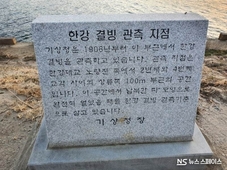













































































































































































































































































































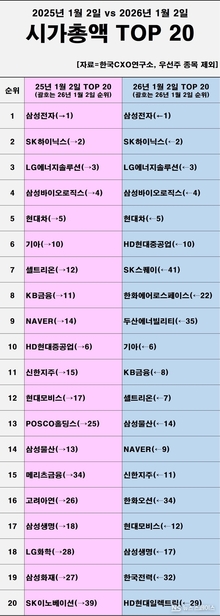








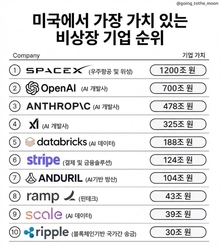




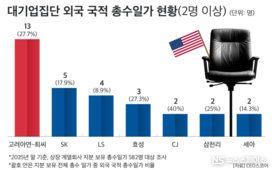










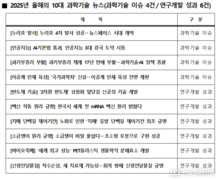












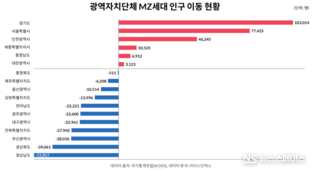
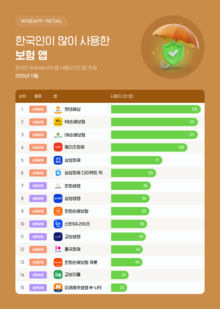


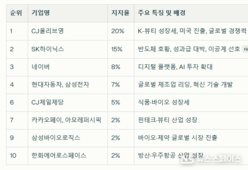
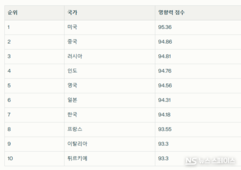



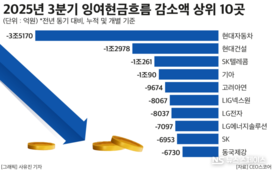


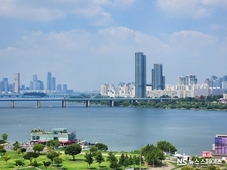

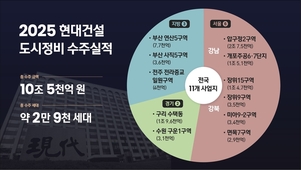

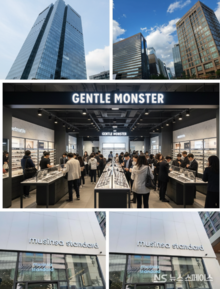









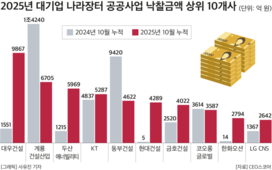


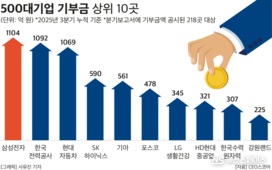
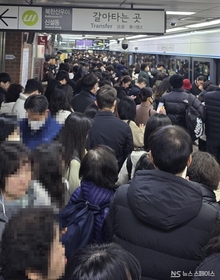

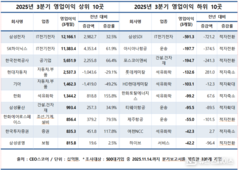

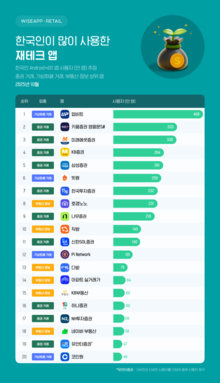


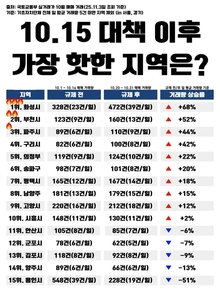









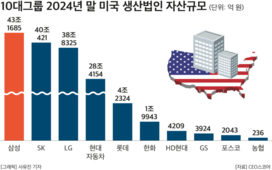
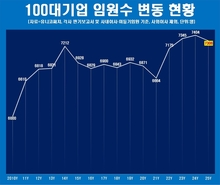
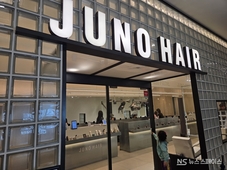
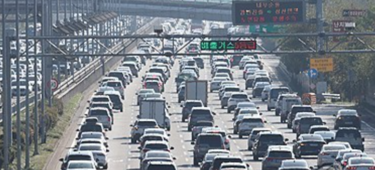
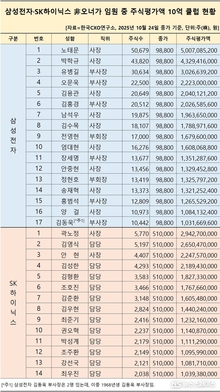



















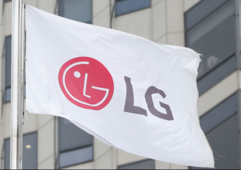














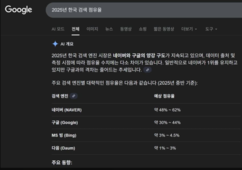


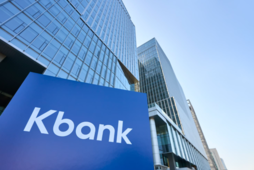



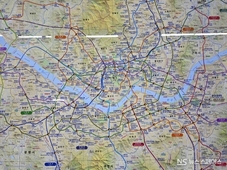











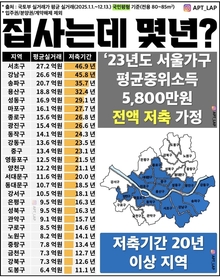







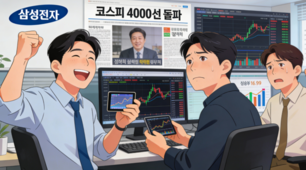


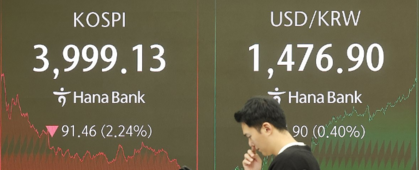


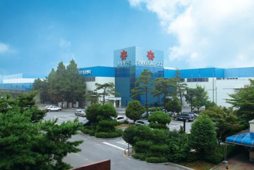




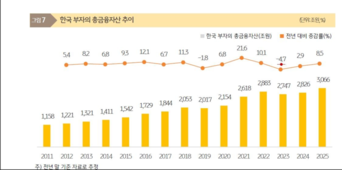
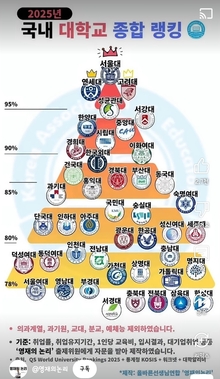












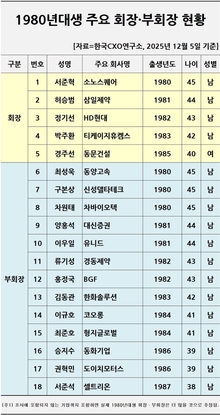































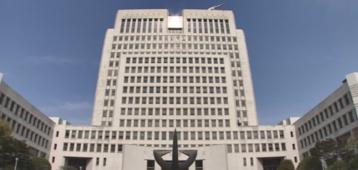


































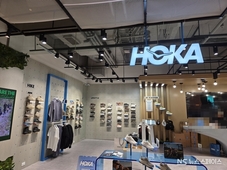



















































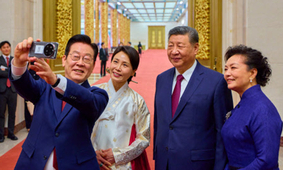































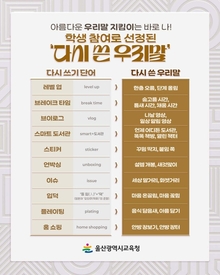



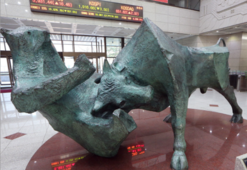





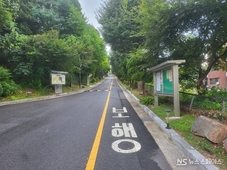












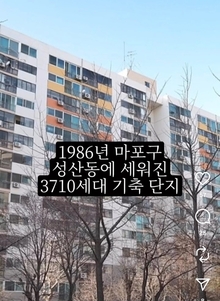


















































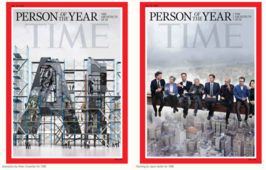




















































































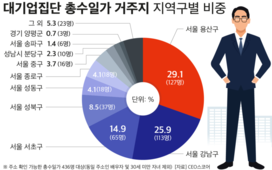

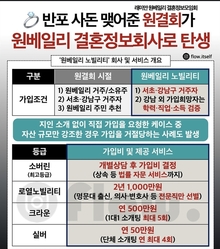

























































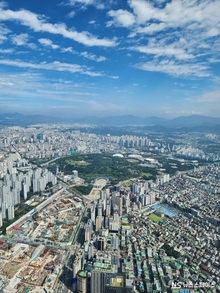
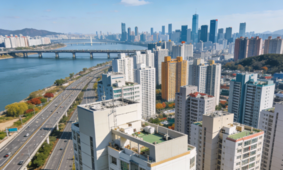
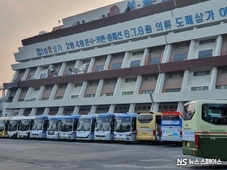









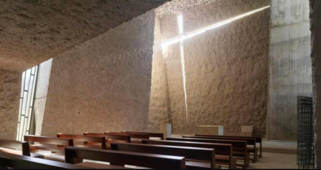




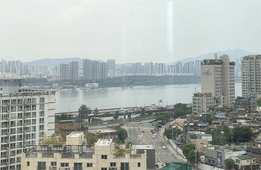






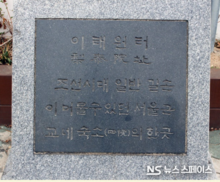





































































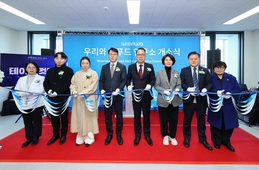








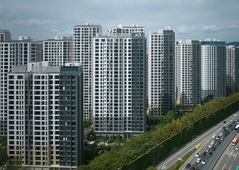






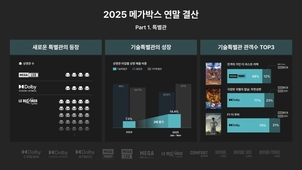
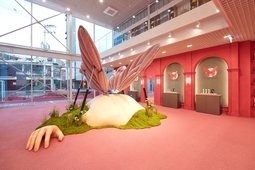
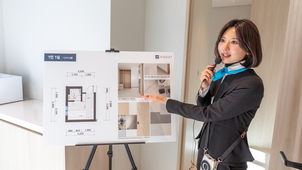



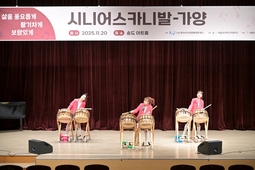

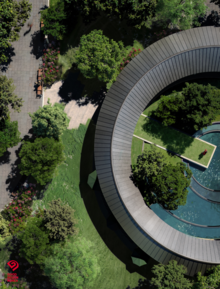
























































































































































































































































































































































































 1
1
 2
2
 3
3
 4
4
 5
5
 6
6
 7
7
 8
8
 9
9
 10
10
 11
11
 12
12
 13
13
 14
14
 15
15
 16
16
 17
17
 18
18
 19
19
 20
20
 21
21
 22
22
 23
23
 24
24
 25
25
 26
26
 27
27
 28
28
 29
29
 30
30
 31
31
 32
32
 33
33
 34
34
 35
35
 36
36
 37
37
 38
38
 39
39
 40
40
 41
41
 42
42
 43
43
 44
44
 45
45
 46
46
 47
47
 48
48
 49
49
 50
50


















































